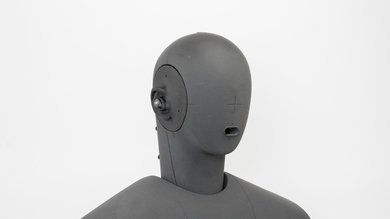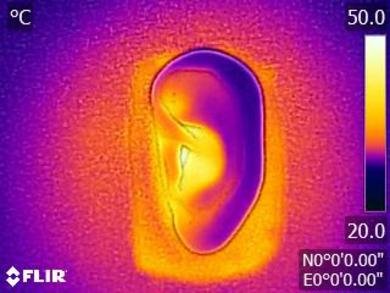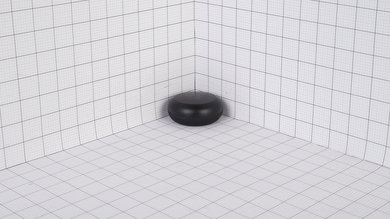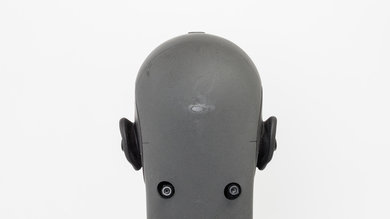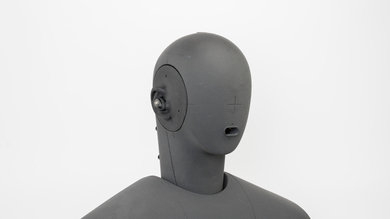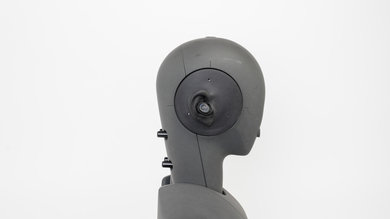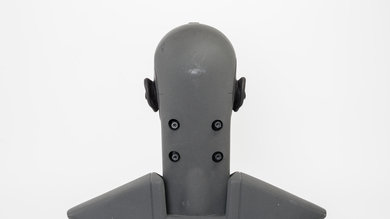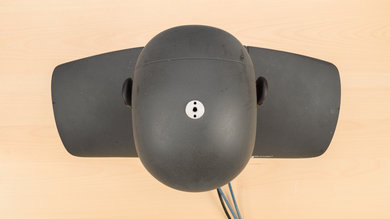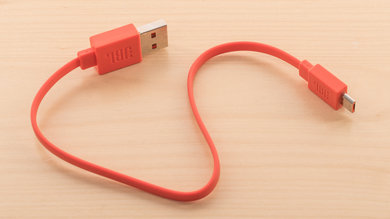The JBL Free X True Wireless are simple, wallet-friendly in-ears. They're virtually identical to the JBL Free Truly Wireless 2018 in nearly every respect and have a no-frills design, so they lack sound customization features, a companion app, and noise cancelling.
Our Verdict
The JBL Free X are decent for most use cases. They have a slightly bassy sound, a stable yet comfortable fit for sports, isolate noise fairly well for commuting, won't leak too much sound at the office, and are overall comfortable and portable. Unfortunately, however, they lack volume controls. They also have very high latency, which makes them less than ideal for streaming video, and have an inadequate microphone for taking calls on the go.
- Decent sound.
- Great isolation.
- Compact and portable design.
- Very high latency.
- No volume controls.
The JBL Free X are satisfactory for neutral sound. They have a bassy sound that delivers satisfying thump and rumble without overwhelming vocals and instruments, which are clear and detailed in mixes. However, sibilants are a little dull. In addition, since they're closed-back in-ears, their passive soundstage won't seem very immersive.
The JBL Free X are good for commute and travel. They have good noise isolation and can block out passenger chatter well. They have trouble blocking the low rumble of bus and plane engines. They also lack volume controls, so you'll have to pull out your phone whenever you want to adjust the volume.
The JBL Free X are great for sports. They have a stable yet comfortable in-ear fit. They're lightweight and portable with an easy-to-use control scheme. Unfortunately, they have no volume controls, and their unique design is not as stable as other truly wireless headphones. They also don't have an IP rating for water resistance.
The JBL Free X are satisfactory for office use. They can passively block out chatty coworkers and don't leak a lot of audio, so you can crank your audio up without worrying about others hearing it. Although their battery does not last very long continuously, if you take short breaks to charge them in their case, they can last you all day. They don't support multi-device pairing, so you'll have to manually switch between your work computer and smartphone throughout the day.
The JBL Free X are poor for wireless gaming. They're Bluetooth-only headphones and have high latency across PC, Android, and iOS. Your audio and visuals will be out of sync, which makes for a frustrating gaming experience.
The JBL Free X are truly wireless earbuds, and you can't use them wired.
The JBL Free X are mediocre for phone calls. They have an integrated mic, which makes your voice sound muffled and lacking in detail. The mic also struggles to separate your voice from moderate noise, so if you have an important call, it's best to do so from a quiet environment.
Changelog
- Updated Aug 11, 2023: We've updated this review's text to keep it up to date and accurate.
- Updated Aug 09, 2023: We've renamed these headphones.
- Updated Feb 05, 2020: Converted to Test Bench 1.4.
- Updated Nov 21, 2019: Converted to Test Bench 1.3.1.
Check Price
Differences Between Sizes And Variants
The JBL Free X come in three color variants: 'Black', 'Blue', and 'White'. If you come across another variant, please let us know in the forums, and we'll update our review.
Popular Headphones Comparisons
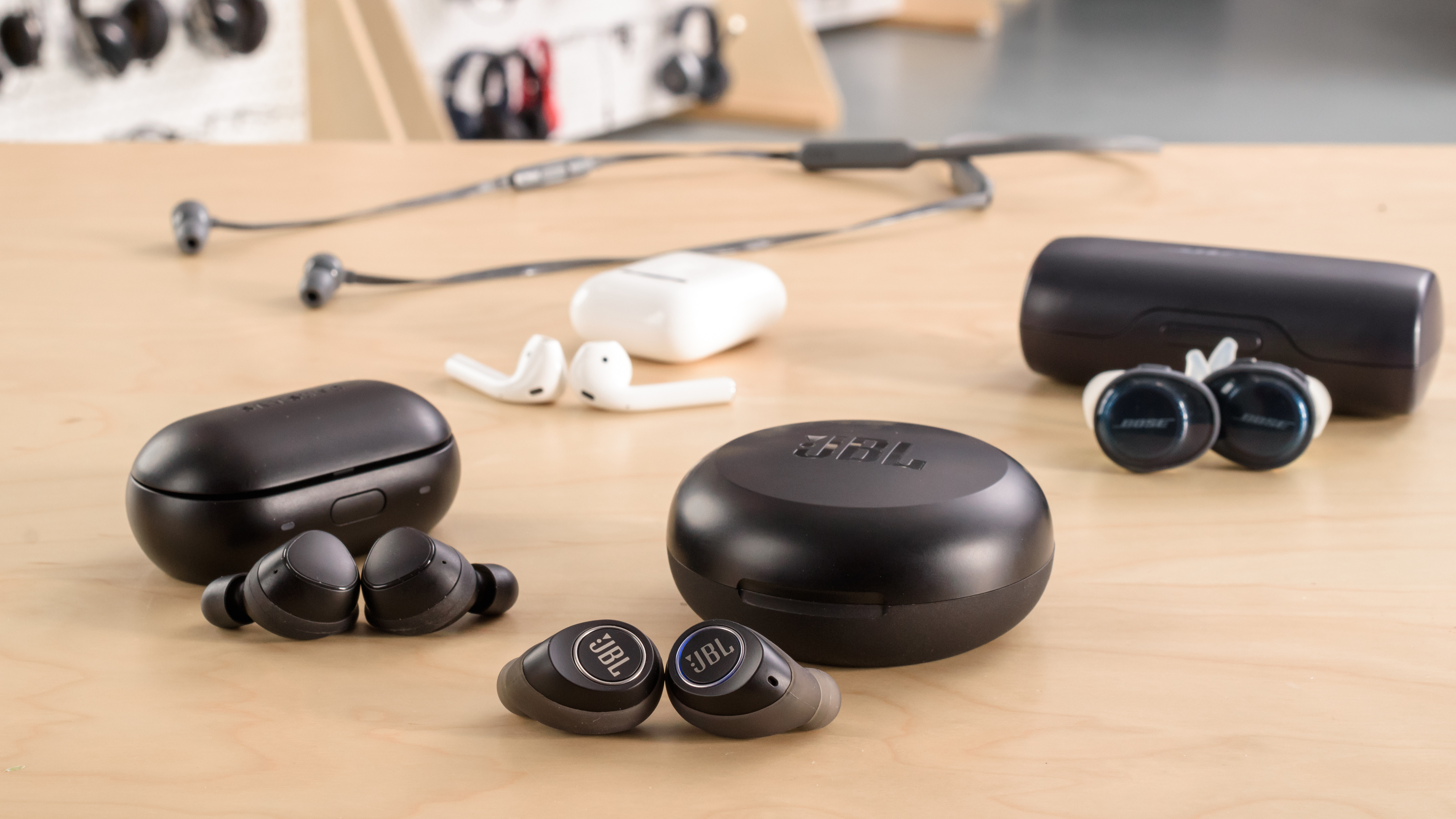
The JBL Free X True Wireless are decent in-ear headphones that are virtually identical to the JBL Free Truly Wireless 2018. They're pretty no-frills and don't have features like noise cancelling or companion app support.
If you like their truly wireless design but want something with a more stable fit or better battery life, check out our recommendations for the best truly wireless earbuds, the best wireless Bluetooth earbuds and in-ears, as well as the best wireless Bluetooth earbuds for running and working out.
The JBL Free X True Wireless are better truly wireless in-ears than the Apple AirPods (1st generation) in general. The JBL sound better, isolate more noise, have an easier-to-use physical control scheme, and have a more stable fit for sports. However, the Apple are much more comfortable than the JBL, have a significantly better battery life, and are easier to use with Apple devices. The JBL are a better choice for most use cases, but the AirPods could be worth looking into if you're a fan of the Apple ecosystem.
The JBL Free X True Wireless are slightly better wireless in-ears than the Beats BeatsX Wireless. The JBL are more comfortable, well-built, and sound a bit better. However, the Beats have a much better battery since they're not truly wireless, charge quickly, pair quickly with Apple devices, and isolate more noise. If you prefer the fit and durable design of the JBL, they're a better choice, but the Beats are worth considering if you need the extra battery life and prefer a more stable fit.
The JBL Free X True Wireless and the Samsung Gear IconX Truly Wireless are both decent truly wireless in-ears. They're both well-designed and have similar isolation and microphone performance. The JBL sound slightly better out of the box, but the Samsung can be customized via EQ presets in the Samsung Gear app. The Samsung also have a better battery, a more stable fit, and volume control. They're both decent choices for most use cases, but the Samsung may be more advantageous for those who prefer more feature-packed headphones.
The JBL Free X True Wireless are overall better truly wireless in-ears than the Bose SoundSport Free Truly Wireless. The JBL have a less bulky design and a more portable charging case. They also isolate significantly more noise than the open-backed Bose, which makes the JBL a better choice for commuters or office workers. However, the Bose are better for critical listeners since they sound better, are slightly more comfortable, and have a longer battery life.
Test Results

The JBL Free X have the same compact earbud design as the JBL Free Truly Wireless 2018. The earbuds are quite thick but relatively narrow. They feel fairly dense and durable but less high-end than more premium truly wireless models, like the Sennheiser Momentum True Wireless or Apple AirPods (1st generation) Truly Wireless. They also come in three color variants: 'Black', 'Blue', and 'White'.
They're comfortable in-ear headphones. They're very lightweight and come with various tip sizes and earbud sleeves to help you find a good fit. Though they aren't quite as comfortable as the earbud-style Bose SoundSport Free Truly Wireless, the difference is negligible, and they're more comfortable than other truly wireless in-ears like the Jabra Elite Sport Truly Wireless. However, they have a unique shape that may not fit everyone, especially those with smaller ears.
These buds have two physical buttons on each earbud. Pressing the button on the right earbud will play or pause your music, answer calls, and trigger your device's voice assistant. The button on the left earbud is for track switching: press once to skip to the next track or twice to return to the last track. This simple control scheme is easy-to-use, and the buttons are good and clicky. Unfortunately, they don't have volume controls. You'll have to reach for your audio device whenever you want to raise or lower the volume of what you're listening to, which is a bit disappointing.
Like most truly wireless in-ears, they're very breathable. This makes them a good option for working out since they won't make your ears sweat as much as over-ear headphones. They barely cause any temperature changes, even after long periods of use. They trap a little heat in the ear canal due to their in-ear design, especially if you add the rubber sleeves to the earbuds, but the difference is still fairly negligible and won't make you sweat more than usual.
These buds are very portable and will fit in almost any pocket. Their unique earbud design makes them smaller than most truly wireless headphones, making them one of the most portable headphones we've tested. The case can also easily fit in larger pockets.
They have the same plastic hard charging case as the JBL Free Truly Wireless 2018. This case will protect the earbuds if you accidentally drop them, but it may open on impact, causing the buds to fall out and get damaged. The case is a bit bulky but will fit better in your pockets than some of the other truly wireless charging cases, like the Bose SoundSport Free Truly Wireless' case.
These buds have the same good build quality as the JBL Free Truly Wireless 2018. The earbuds feel dense and durable enough to survive a few accidental drops, and the case is sturdy. Although sturdy, they don't look or feel as high-end as some of the other truly wireless headsets we've tested.
They're good earbuds for sports, thanks to their stable in-ear design. They come with multiple silicone tips and earbud sleeves to help you achieve a secure fit. Once in your ears, they don't move around much, but the unique shape of the earbuds may not fit as well for everyone, especially those with smaller ears. You may also adjust the fit of these earbuds a bit more often, which can be annoying. If you're looking for headphones to wear while running and working out, you might want to consider models with ear-hooks, like the JBL Endurance Peak True Wireless.
These headphones have a bass-heavy sound that delivers extra thump, rumble, and boom, making them a solid choice for genres like EDM and hip-hop. They lack sound customization features, so you can't adjust their sound to your liking.
These buds have excellent frequency response consistency. Once you achieve a proper fit and an air-tight seal using the assortment of tips that come with the headphones, you'll get consistent bass and treble delivery every time you use them.
These buds have great bass accuracy. The response throughout the range is flat and well-balanced. It means they have deep, thumpy, and punchy bass that isn’t overpowering, making them well-suited for all music genres.
Their mid accuracy is outstanding. The mid-range is quite well-balanced and produces clear and accurate vocals and instruments. That said, a slight dip in the mid-mid nudges vocals and instruments to the back of the mix.
These buds have good treble accuracy. The low-treble is slightly underemphasized, which results in slightly veiled vocals and instruments. The dip extends into the mid-treble, so sibilants like cymbals are also dulled.
The peaks and dips performance is great. The response is mostly flat, indicating that the headphones can control their sound profile well. That said, a dip in the mid-mid nudges vocals and instruments to the back of the mix. An uneven low-treble makes vocals and instruments sound harsh or veiled, depending on the frequency. Sibilants like cymbals are piercing, too.
JBL produces a lot of headphones, but they usually have well-matched drivers, and in turn, solid imaging performances. That said, imaging varies between units and indicates a manufacturer's quality control and ergonomics. Our unit's L/R drivers are well-matched in amplitude, frequency, phase response, and group delay. As a result, objects like voices and sound effects accurately localize in the stereo image.
They have a bad passive soundstage, which is normal for in-ear headphones. They bypass your outer ear, which needs to interact with sound to create a more immersive audio experience. As a result, their soundstage will be perceived as small and located inside the listener's head. They also have a closed-back design, meaning their soundstage won't feel as open as open-back earbuds like the Apple AirPods (1st generation) Truly Wireless.
The weighted harmonic distortion performance is good. There's a peak between the low to mid-treble at moderate and high volumes, but it affects a narrow frequency band and will be hard to hear with real-life content.
These are the settings used to test these buds; our results are only valid in this configuration.
These buds have good noise isolation. Although they don't have noise cancelling, they can block out ambient chatter and the high-pitched hum of AC units well. They have some trouble cutting down the low rumble of bus engines.
These buds don't isolate you from noise as well as the JBL Free Truly Wireless 2018, but this may be because the large earbuds are difficult to fit in our test rig, and the scores obtained are within the tolerances of our testing.
The leakage performance is fantastic. Most of the leakage is concentrated in a narrow band in the mid-treble range and is very thin and sharp sounding. That said, people around you won't hear your audio if you're listening to it at high volumes.
The integrated microphone has sub-par recording quality. Your voice sounds thin, lacking a bit of detail, and noticeably muffled. However, it will still be relatively easy to comprehend. If you want truly wireless earbuds with a better mic, check out the Jabra Evolve 65t Truly Wireless. They use a proprietary dongle to achieve better mic performance and are quite a bit more expensive than the JBL Free X, so they may not be worth it for everyone.
The microphone has mediocre noise handling. The mic is best suited for quiet environments as it struggles to separate speech from ambient noise in moderately loud or loud situations. Background noise will drown out your voice if you take calls from a busy street or office.
These buds have a mediocre battery performance. They provide 3.4 hours of continuous playback, and their case provides five additional charges. They won't be ideal for long periods of continuous use. However, keep in mind that battery life varies depending on use. If you want a truly wireless design with a better battery, consider the Apple AirPods (1st generation) Truly Wireless.
They don't support the JBL My Headphones app like the JBL Everest Elite 700 Wireless.
These buds have mediocre Bluetooth connectivity. They don't support NFC or multi-device pairing but auto-connect to the last paired device when you take them out of their charging case. They have terrible latency, which causes your audio and visuals to fall out of sync. Keep in mind that some apps compensate for latency.
They're truly wireless earbuds that don't have an audio cable or a wired connection. If you want decent-sounding and stable in-ears with a wired connection, look at the TIN Audio T2 or the 1More Triple Driver.
Their charging case delivers up to 17 hours of extra battery life. However, the case has no inputs or distinguishing special features like the Qi wireless charging on the Altec Lansing True Evo Truly Wireless.

